The one item in my shooting kit that I have never owned is a laser rangefinder. It is something that I have always wanted, and on occasion have needed, but never committed the money to acquire one. But since I have rejuvenated my precision rifle pursuits (which I shied away from after going into competitive Service Rifle), I felt like I should probably purchase one. So I ended up ordering a Sig Sauer KILO2000 laser rangefinder unit from Brownells, Inc.
More commonly referred to as the Sig KILO2000, or simply the KILO2000, this laser rangefinder is relatively new on the market, making its way to consumers just at the start of 2016. Since the KILO2000 came out, it has received much praise in the shooting community. Word of mouth has indicated that the KILO2000 is adept at getting readings on non-reflective targets out to and beyond 1000 yards with consistency and repeatability. At an MSRP of $500 USD, the SIG KILO2000 supposedly performs better than other laser rangefinders at the same price point, and is not too far behind performance to the venerable Leica units.
The timing of the SIG KILO2000 release and its subsequent favorable reception by the shooting community overall pretty much led to me acquiring this unit.
Opening the package from Brownells revealed a clean and concise product package. No excessive shrink wrapping or box sleeves. Just a simple SIG factory hologram sticker to seal the clamshell box.
The SIG Sauer KILO2000 comes with a nylon case, lanyard, and a CR2 lithium battery, along with the instruction manual.
One important item to immediately note is the lack of a 1/4″-20 female thread for mounting to a tripod or other optics stand. In order to use the KILO2000 on a tripod, you need a third-party / aftermarket adapter. Fortunately, Really Right Stuff, the manufacturer of high quality camera tripods and camera mounting solutions produced an Arca-Swiss compatible mount for the KILO2000.
Why SIG Sauer chose not to include a 1/4″-20 threaded mount in the case/chassis of the KILO2000 unit is beyond me. I do not know what the internals look like, but I can’t imagine they could not have fit a 1/4″-20 female thread into the casing of the KILO2000.
As far as manipulating and controlling the KILO2000 laser range finder, it is pretty simple to operate. There is an adjustable eyecup which can be set for use with or without glasses with a simple twist of the cup. The viewfinder is easily adjustable for the operator’s eye with a small throw lever on the eyepiece.
There is the RANGE button on the top to turn on the unit and to get a reading and the MODE button on the side to adjust a few of the settings that can be toggled.
With regards to customizing the settings, there really isn’t much to change. I am actually using it as is out of the box:
- Best Target
- Automatic Brightness
- Angled Modified Range (AMR) = On
- Units = Yards
Best Target means the laser rangefinder will range the object that gives it the best reading, or is the most likely target. Last Target is what this setting can be toggled to and this setting means the unit will return the reading of the furthest object in the beam’s path. For example, the beam will get multiple readings from the beam when trying to get a range on an object through and behind foliage (tree branches, tall grass, etc).
Automatic Brightness simply refers to the brightness of the OLED display in the viewfinder. Automatic means it will adjust accordingly based on the ambient lighting conditions.
Units set to yards is obvious (‘MERICA!). Seriously, though, I’m used to yards as opposed to meters.
Angled Modified Range is what most people will want as opposed to Line of Sight. If you are shooting at an angle, for example from a higher elevation to the target, the straight line distance from you to the object in question is going to actually be farther than the true level ground distance from your position to the object.
This is important because the effect of gravity happens on the level ground axis, and not the Line of Sight axis, and this is what is affecting the trajectory of the bullet.
I didn’t want to make this a trigonometry lesson, but everyone should be well aware of the Law of Cosines (c2 = a2 +b2 – 2ab•cosC°). With a 90 degree triangle that is represented by a shooter at an elevation position with a Line of Sight direct path to a path at a lower elevation (e.g. ground), the Law of Cosines is simplified to c2 = a2 +b2, otherwise known as the Pythagorean theorem.
Obviously, a laser rangefinder doesn’t know how high it is relative to the target, but it does have an internal level that can detect the (inclination or declination) angle to the target (angle A°). Since the laser rangefinder can get angle A° while angle C° is inferred (90°), the third angle is also known (sum of angles in triangle is 180°). This combined with the fact that the laser rangefinder can get distance c (direct line of sight distance), it can calculate distance a (level ground distance) by using the Law of Sines (knowing all angles of a triangle and length of one side allows you to calculate the length of any other side length).
Anyway, as far as field testing, since this is my very first laser rangefinder, I do not have any real way to compare it against another laser rangefinder (other than borrowing units from friends).
One relevant field tests I could think of is to find a set location from which to collect distance data from on a selected set of objects or landmarks, then collect distance data on those same objects/landmarks at different times of day (sun in different part of sky) and in different lighting conditions (sunny vs overcast). This would allow me to test the consistency and repeatability of the SIG Sauer KILO2000 in ranging objects.
Fortunately, there is a hilltop just a five minute hike from my office (and another few minutes to climb) that gives me an excellent vantage point to use a laser rangefinder and try to get distances of various buildings and/or landmarks.

I used a tripod and attempted to set it up in the exact same spot on each data collection session to eliminate any variance in the distance readings caused by the operator. I made sure to note in my Field Notes which landmarks (e.g. buildings) I was getting a reading off of in the first session, and take extra notes on where exactly on the landmark I was pointing the KILO2000 aiming reticle on when obtaining the distance reading.
I ended up collecting four sets of data, with distance readings for the same twenty landmarks (on the same exact spot of the given landmark), as well as data on four additional landmarks when I was able to get a reading with the KILO2000 unit.
The following screenshot is a summarized chart of the data (click on thumbnail for larger, readable, version):
I have also made a PDF available with the same data.
The four data sets were collected on:
- 2016-08-26 (Fri) @ ~0800. Weather was overcast with haze/fog and slight mist.
- 2016-08-26 (Fri) @ ~1230. Weather was sunny and clear.
- 2016-08-26 (Fri) @ ~1700. Weather was sunny and clear.
- 2016-08-28 (Sun) @ ~0730. Weather was sunny with slight haze.
- Sun at 0800
- Sun at 1230
- Sun at 1700
Each data set consisted of three readings taken on each individual landmark. I then generated averages for each individual data set, but then I generated the average, standard deviation, and extreme spread for all the data sets (for each individual landmark) aggregated.
In my field testing there were few interesting observations.
First off, getting distance readings off the same object multiple times in a row often yielded results that varied by as little as a few tenths of a yard to as much as 2 to 3 full yards.
Second, it was difficult to get distance readings off a non-reflective object beyond 1200 yards in overcast and/or hazy conditions.
A third observation is that while the distance readings for a given landmark varied in the same session, the variances between readings taken during other times of day were not directly correlated to any consistent skew. For example, while some readings for a given landmark were shorter (1 to 2 yards) than in the overcast morning, readings for other landmarks came up slightly longer (1 – 2 yards).
On paper, the KILO2000 is rated to read reflective objects out to 3400 yards, trees out to 1500 yards, and deer out out 1200 yards. The manual cites accuracy of:
- +/-1 0.5 yards or meters out to 500 yards
- +/-1 yard between 500 to 1000 yards
- +/-1 2 yards beyond 1000 yards
Trees and deer are considered non-reflective, but the difference between the two ratings is the size of the objects. Trees can be big given the amount of foliage and will provide plenty of surface area to return the laser beam back to the unit. Deer on the other hand, depending on the type, are only about 2 to 4 feet tall and 3 to 7 feet long.
If you look at the charted data that I collected, the statistics are quite interesting. First off, the specifications of +/- 1 yard of accuracy and +/- 2 yards of accuracy between 500-1000 and beyond 1000 yards, respectively, is not demonstrated in practical use.
If you look at the landmarks with aggregated/overall averages between 500 and 1000 yards, the extreme spread (number of yards been the lowest and highest readings) vary between 2.9 yards and 5.0 yards. If you divide those in half, that is roughly +/- 1.5 to 2.5 yards of (in)accuracy. If you look at the landmarks with aggregated/overall averages beyond 1000 yards, the extreme spread vary between 2.7 and 6.0 yards, for an (in)accuracy of +/- 1.4 to 3.0 yards.
But even then, this is still pretty good considering these values were collected in various lighting conditions and directions (location of sun in sky), so a +/- 3 yard of accuracy out to ~1900 yards is quite good with this sampling of data.
Although, the standard deviation (the amount of units – yards – that one reading will vary from the other) is higher than you would expect. In many cases, the standard deviation exceeds one yard. This means than if you take one reading on an object, then take another reading of that same object, the value returned could be different from the first by over one yard.
Some people might nit pick this (in)consistency, but I think this level of variance is quite suitable. Are we really going to fault a laser rangefinder for being off by a couple yards. Even a five yard variance at 1500 yards isn’t going to be a deal breaker in the world of long range shooting.
There were four additional landmarks (U through X on the chart) that I took distance readings on after the first session, because in the first session (overcast, haze/fog) I couldn’t get readings off of those buildings. But in mid-day and late afternoon (clear) sun, I was able to get readings off of those buildings and semi-reflective surfaces at ~1600 to ~1950 yards.
It is important to note that on sunny (slight haze) morning, I was able to get readings off landmarks U, V, and W, but the KILO2000 only gave a reading once out of every 2 or 3 tries. Landmark X that was originally read as 1950 yards in two prior data collections sessions could not be read in early morning sunlight.
So my field testing demonstrated that while the SIG Sauer KILO2000 isn’t exactly within the advertised +/- 0.5, 1.0, and 2.0 yard accuracy for the <500, 500-1000, and >1000 distances, it still performs within double that variance (approximately +/- 3 yards out to the measurable distances). There is demonstrated consistency in the readings obtained in all the lighting conditions (assuming the object could be ranged by the unit).
While I did not record specific data in this regard, I did test the ability of the KILO2000 to obtain readings on field-type objects, specifically trees and rocks (boulders). In early-morning sun, the KILO2000 was actually able to get repeatable readings on trees out to 1500 yards, and large rocks out to 1200 yards.
Given that my field test was specifically meant to check consistency and repeatability of the rangefinder, is there a way to confirm accuracy of that data?
Well, given that I do not have another known confirmed accuracy laser rangefinder to compare it against, one way to validate the collected distance readings from my field testing is via Google Maps/Earth.
Google Maps allows you to measure the distance between two points on a map. Note that this source of distance data may or may not be 100% accurate, most people will accept Google Maps data to be fairly reliable.
I picked a few of the landmarks from my field test and used Google Maps to plot the point to point distance from the observation position on the hill that I was at to the given landmarks.
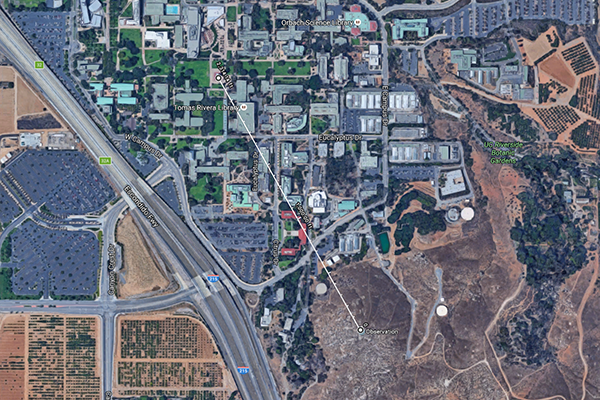
Landmark H on my field test data is actually the UC Riverside clock tower. The Google Maps distance tool indicates that it is 2314.14 feet (771.38 yards) from my field testing position. I measured the distance by aiming at the south facing clock dial for an average reading of 777.8 yards.
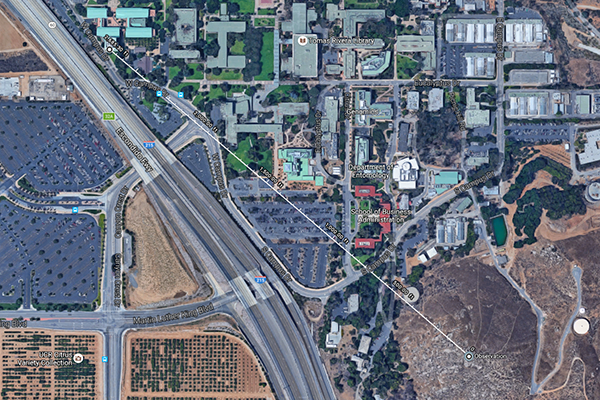
Landmark I is the Humanities and Social Sciences Building Tower. The Google Maps distance tool indicates that it is 2685.30 feet (895.1 yards) from my field testing position. I measured the distance by aiming at the southeast corner of the tower for an average reading of 893.7 yards.
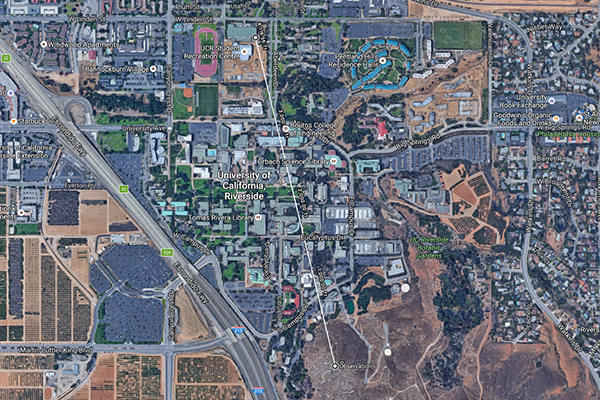
Landmark T is a wall of the Recreation Center. The Google Maps distance tool indicates that it is 4116.56 feet (1372.52 yards) from my field testing position. I measured the distance by aiming at the farthest south facing wall, east corner for an average reading of 1374.1 yards.
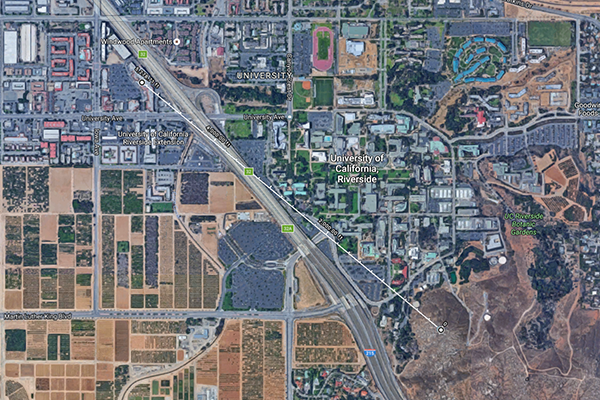
Landmark V is the University Village, specifically the domed/coned roof of the center of the UV. The Google Maps distance tool indicates that it is 5278.71 feet (1759.57 yards) from my field testing position. I measured the distance by aiming right at the wall right below the start of the domed/coned roof for an average reading of 1759.5 yards.
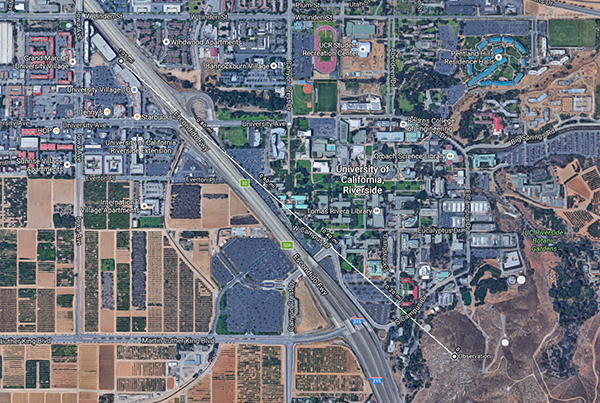
Landmark W is the University Village parking structure sign. The Google Maps distance tool indicates that it is 1.05 miles (1848 yards) from my field testing position. I measured the distance by aiming right at the sign face for an average reading of 1851.8 yards.
As you can see above, the Google Maps measured distance was within 2 to 3 yards of the SIG KILO2000 measured field data, with the exception of the clock tower, which Google Maps indicates is about 6 yards closer.
Is the Google Maps data exact? I don’t think it is perfect, especially since it assumes that I plotted my exact field position within a yard on the map, and am correctly plotting to the respective point on the landmark that I obtained a reading off of. Not to mention we are relying on Google Maps’ data to be correct as well.
Either way, the Google Maps data does support the field data measurements obtained, thus lending credence to the relative accuracy of the Sig Sauer KILO2000 laser rangefinder.
The initial field testing leaves me with favorable opinion of the SIG Sauer KILO2000 laser rangefinder unit. It appears that in decent lighting conditions, you can range out to 2000 yards on semi-reflective objects, and still measure distance of non-reflective (e.g. trees) out to 1500 yards as advertised. While the +/- accuracy is not what is billed on paper, it is still close in practical use.
As far as the unit itself, the construction and design appears sound, except for the omission of the 1/4″-20 tripod adapter thread. The viewfinder has decent eye relief so I can use it while wearing glasses, and the diopter is easy to adjust. The menu system is easy to work through, and there really isn’t much in the firmware to configure. Out of the box it is pretty much ready to go once you put in the battery.
With regards to the battery, the CR2 is a bit of a minor annoyance to me. I do not use CR2 batteries in any other devices, so that means one more battery type to carry a spare of on top of CR123A and CR2032 (flashlight and rifle optics, respectively).
The nylon case would be better if they made it MOLLE compatible as opposed to with the single (belt) loop on the back. It would have been great to be able to use MALICE clips to secure this to a bag. Even if you don’t attache it to a MOLLE panel, you can still run a MALICE clip and secure it on the belt. Perhaps some other nylon gear manufacturer will produce MOLLE compatible case for the KILO2000.
Fortunately, the KILO2000 will fit in the nylon case with the Really Right Stuff adapter attached.
Obviously, this review lacks a long term durability assessment because this is something that can’t be stated without usage over a long period of time. There have been reports of people having issues with their SIG KILO2000 units after a few months and having to get them serviced. But time will tell if I have an issue.
I would have liked to have taken the KILO2000 out to the known distance range(s) at Marine Corps Base Camp Pendleton, but I wrote this article before the next matches scheduled by the Santa Margarita Gun Club. Hopefully I can get out to the next 3×600 or 3×1000 match(es) to get some more relevant test data and can add them to this review as an addendum.
As far as recommending the SIG Sauer KILO2000 laser rangefinder, after my initial field testing and handling of the unit, I have no problem recommending it at this time. The performance is impressive and from what I understand, it exceeds the performance of the units in the price range just below the KILO2000’s MSRP of $500, and is very close to meeting the performance of the Leica 1600b (recently discontinued).
I will say that I have done a lot of off and on research regarding what people are using and recommending for laser rangefinder units prior to springing for the SIG KILO2000. The problem with going off of word of mouth with laser rangefinders is that invariably, there is someone who will complain that rangefinder A failed to read targets at x, y, and z distances. Pick any rangefinder short of the Vectronix laser rangefinders (which start at $3300 USD), and you will find that someone will have something negative to say about it.
I feel that people have unreasonable expectations when it comes to laser rangefinders. They expect the rangefinder to perform exactly to specification, which does some reasonable to some respects. But these rangefinders are advertised with data based on laboratory conditions, not real-world conditions. While manufacturers should probably give more conservative data on the performance of their laser rangefinder products, they’re in the business of selling product. If consumers kept in mind that the paper specifications of a rangefinder’s performance is in ideal, lab grade conditions, and assumed the rangefinder would perform at about 80% of that specification, consumers would be more content with the unit they acquired. Obviously, this sounds like settling for a less than advertised product (and it is in some regards), but I feel this is the nature of the game with regards to consumer grade laser rangefinders.
Regardless, the Sig Sauer KILO2000 laser rangefinder unit should provide excellent ranging capabilities for most shooters, in my opinion. If you’re looking for a laser rangefinder at the $500 price point, definitely consider the KILO2000.
2016-08-31: I have received a couple comments about the fact that I used a rangefinder at a school and how it “looks bad.” Well, I don’t know what to say. It just so happens that work at a University and I am not doing anything nefarious, illegal, unethical, or improper. Maybe I am not being cognizant of what people’s perception of my field testing may appear to be, but it is what it is. I do find it ironic that people would over exaggerate my actions of collecting map and distance data at a research institution.

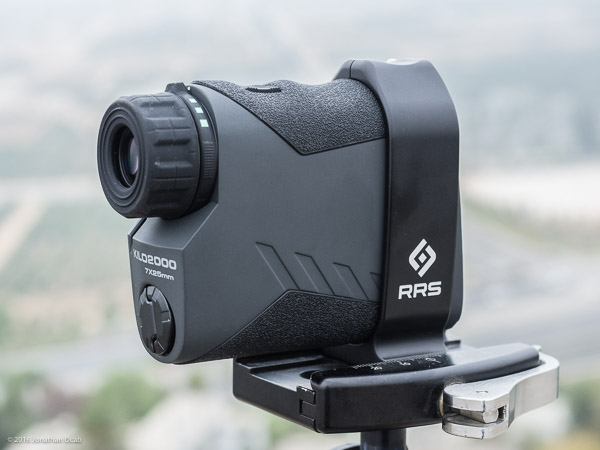
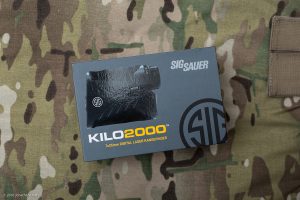
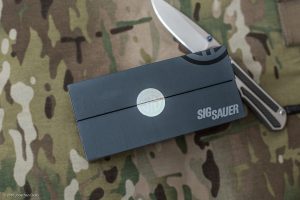
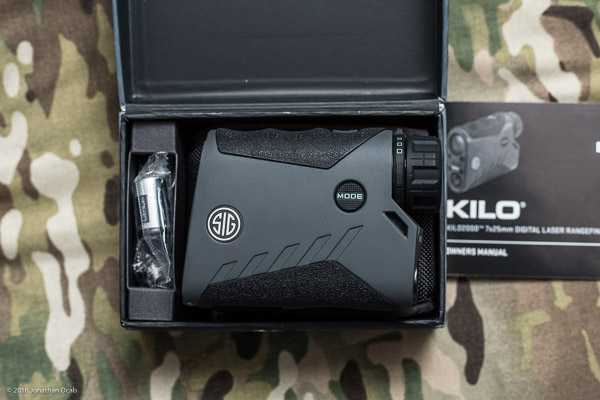
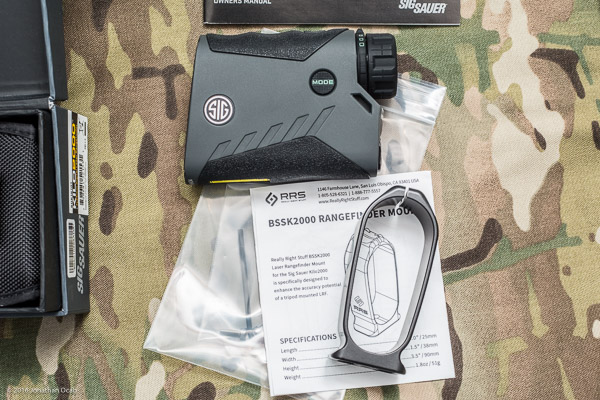
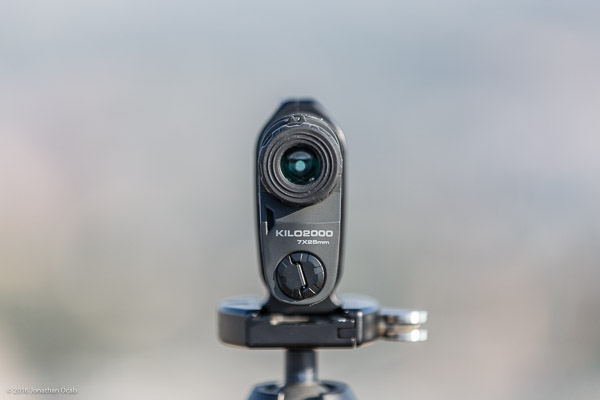
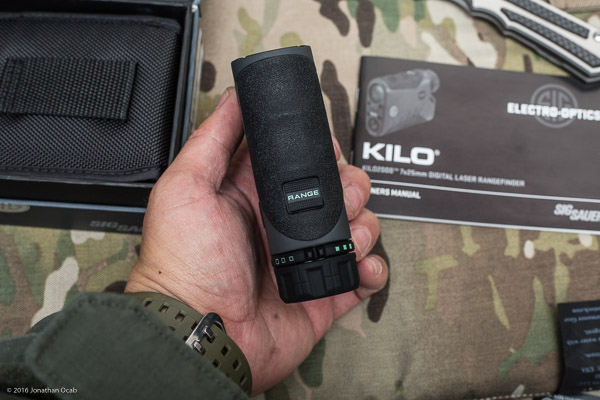
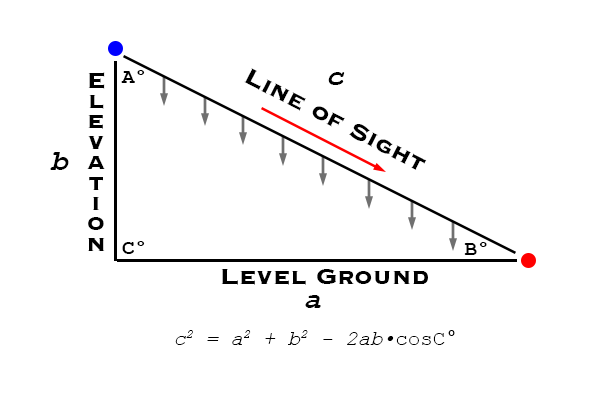
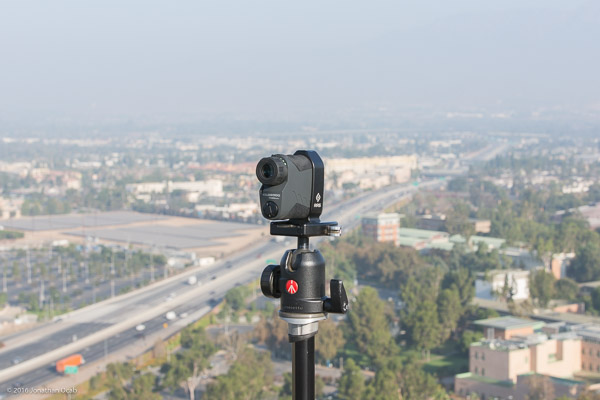
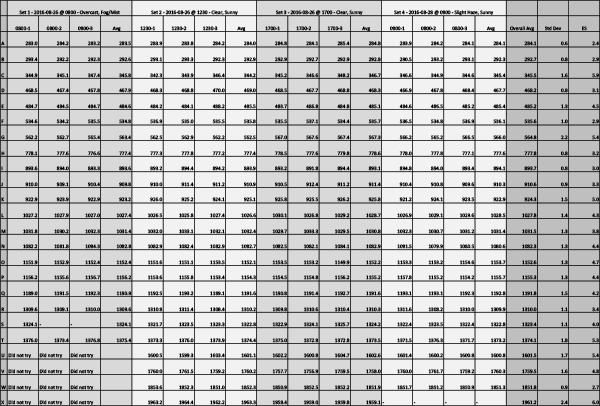
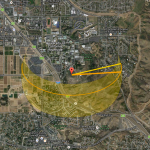
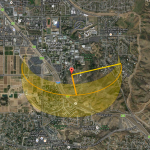
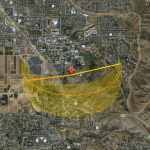
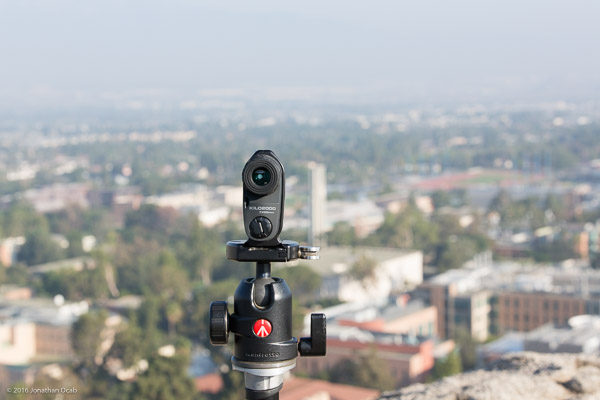
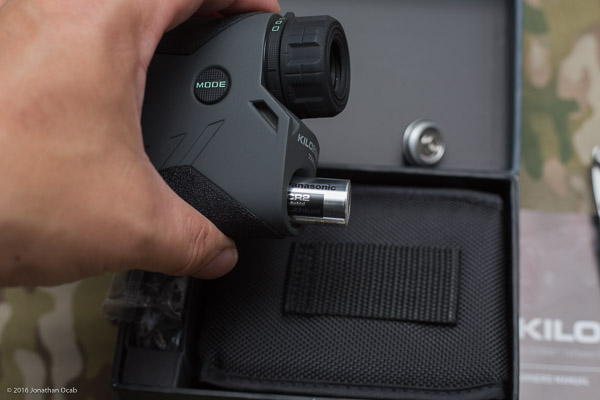
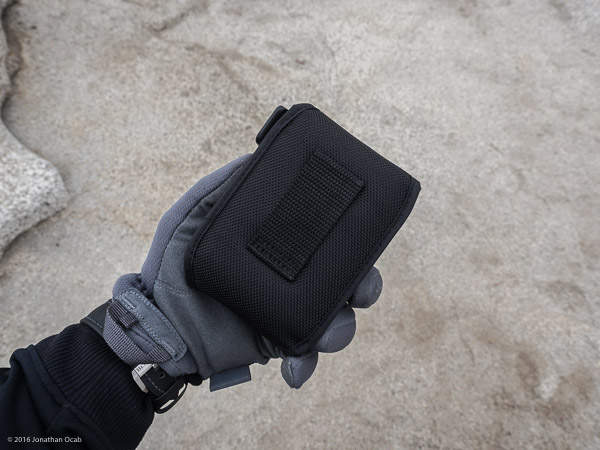
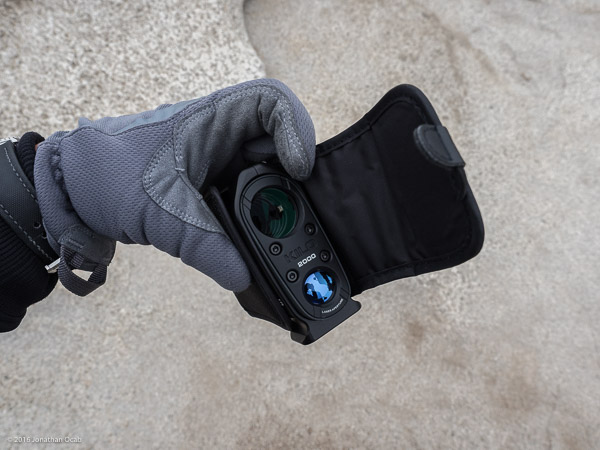
Tony Nokleberg
I’ve tried the rrs website and can’t find the mount that you are using on your kilo 2000. Any help you could give would be greatly appreciated. Tony nokleberg, Enderlin,NDak. email; mrlmfg@mlgc.com thanks!!!
ocabj
http://soar.reallyrightstuff.com/BSSK2000-for-Sig-Sauer-Kilo2000-Rangefinder
Keith Turner
Great research to share. I just bought the KILO2000 in the6x22, as it was on sale for $229. I too can not find the mount you mentioned in the article review of the KILO2000. When I click on the link you listed, it says page not found. If you are willing, can you please send the info to thecowkids@gmail.com. Thank you
Jonathan Ocab
You may want to reach out to RRS directly. I cannot find it on their website. It is possible that the stopped producing it. Sig currently makes their own tripod mount -https://www.sigsauer.com/store/tripod-adapter-sleeve-kilo-2000.html